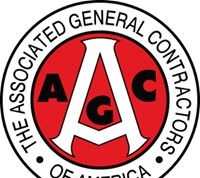A Progress Report on the Federal Strategic Plan to Prevent and End Homelessness
WASHINGTON, D.C. – June 22, 2011 – (RealEstateRama) — On June 22, 2010, the U.S. Interagency Council on Homelessness (USICH) issued the Administration’s federal strategic plan to end homelessness.
Opening Doors: Federal Strategic Plan to Prevent and End Homelessness (the Plan) set the goals of ending chronic and veteran homelessness in five years and homelessness among families and youth in ten years. It also proposed to set the nation on a path to ending all homelessness. The Plan identified 52 strategies to be used to meet these goals. It identified the agencies – primarily the Departments of Housing and Urban Development (HUD), Health and Human Services (HHS), Veterans Affairs (VA), and Labor (DoL) – responsible for each strategy, because while USICH is the federal coordinating body for implementation of the Plan, it is the member agencies of USICH that have the resources and responsibility to meet the goals.
The Plan has made the federal government a partner to the more than 240 jurisdictions with ten year plans to end homelessness and represents a federal commitment to coordinate agency policies and make federal resources available for these efforts. Additionally, the Plan, along with a major evolution of the federal homeless assistance system in the form of the Homeless Emergency Assistance and Rapid Transition to Housing (HEARTH) Act, ushers in a new era of federal accountability for the nation’s homelessness problem.
The Plan proposes to achieve the goals by implementing the 52 strategies, which are grouped under five themes and ten objectives. The first section of this Progress Report, “Summary of Program Assessments,” looks at the progress that federal agencies have made on the Plan’s 52 strategies. The assessments made in this report reveal the following:
- Some progress has been made on 39 of the 52 strategies (75 percent) identified in the Plan and measurable progress has been made on 18 of the 52 strategies (35 percent).
- The most progress has been made on the objectives to “Promote Collaborative Leadership” and to “Strengthen Capacity and Knowledge.” Considerable progress has also been made on the three objectives related to health care (“Integrate Health Care with Housing,” “Advance Health and Housing Stability for Youth,” and “Advance Health and Housing Stability for Adults”).
- Two key objectives where more progress will be critical in order to meet the goals of the Plan are the objectives to “Provide Affordable Housing” and “Increase Economic Security.”
- No progress was made on 13 of the strategies (25 percent).
The second part of the Progress Report, “Available Data on Changes in Homelessness,” looks at the limited information available at the time of writing on changes in the incidence of homelessness since the introduction of the Plan. While not conclusive, an examination of certain point-in-time counts taken by jurisdictions over a time period that most directly coincides with the release and anniversary of the Plan shows a slight increase in homelessness during the Plan’s first year. So, while it is clear that much activity and some progress have been made by the agencies in pursuing the strategies, it is also clear that more aggressive efforts are needed moving forward, particularly in the areas of employment and housing, to begin making the kind of progress that will decrease the number of people experiencing homelessness.














